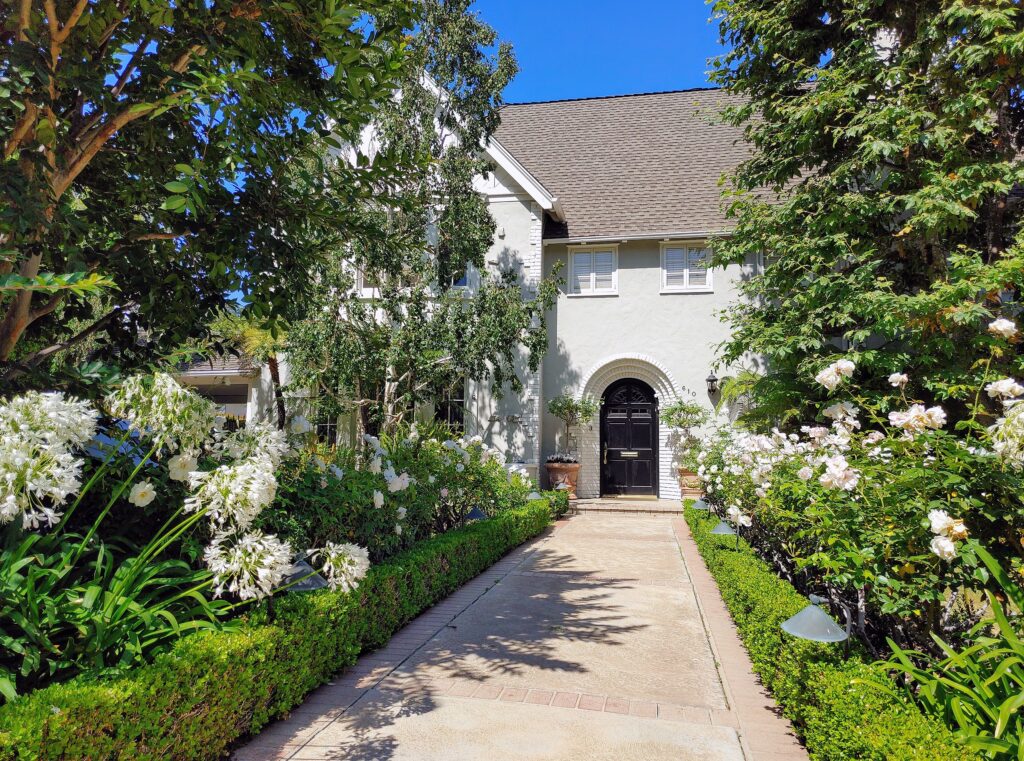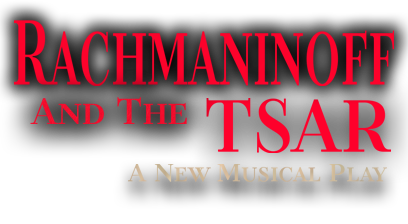Explore Rachmaninoff's Los Angeles

Explore Rachmaninoff's music in the links below
- RACHMANINOFF PLAYS and SPEAKS - HOME MOVIES
- RACHMANINOFF PLAYS HIS PIANO CONCERTOS
- RACHMANINOFF PLAYS HIS PRELUDE IN C# minor OP. 3/2
- RACHMANINOFF PLAYS HIS BARCAROLLE IN G minor
- RACHMANINOFF PLAYS HIS POLKA de W.R.
- RACHMANINOFF PLAYS HIS PRELUDE OP. 23/5
- RACHMANINOFF PLAYS HIS PRELUDE OP. 32/5
- RACHMANINOFF PLAYS HIS PRELUDE OP. 32/12
- RACHMANINOFF PLAYS HIS POLICHINELLE
- RACHMANINOFF PLAY HIS ARRANGEMENT OF HOPAK AFTER MUSSORGSKY
- RACHMANINOFF PLAYS HIS ARRANGEMENT OF KREISLER’S LIEBESLEID
- RACHMANINOFF PLAYS HIS ARRANGEMENT OF KREISLER’S LIEBESFREUD
- RACHMANINOFF PLAYS HIS ETUDE TABLEAUX OP 39/6
- RACHMANINOFF PLAYS HIS RHAPSODY ON A THEME OF PAGANINI
- RACHMANINOFF PLAYS SELECTIONS OF HIS SYMPHONIC DANCES
- RACHMANINOFF PLAYS POLKA ITALIENNE WITH HIS WIFE NATALIA
Concert Appearances
From 1889-1943 Racmaninoff played or conducted 1,643 performances. This total includes 1,020 concerts in 221 cities in the United States and Canada alone.
number of concerto performances given by Rachmaninoff:
| COMPOSER | CONCERTO | NUMBER OF PERFORMANCES |
|---|---|---|
| BEETHOVEN | Concerto No 1 in C major, Op 15 | 17 |
| LISZT | Concerto no 1 in E flat, G. 124 | 10 |
| LISZT | Totentanz, G. 126 | 1 |
| RACHMANINOFF | Concerto No 1 in F sharp minor, Op1 | |
| Original Version | 1 | |
| Revised Version | 23 | |
| RACHMANINOFF | Concerto No 2 in C minor, Op 18 | 143 |
| RACHMANINOFF | Concerto No 3 in D minor, Op 30 | 86 |
| RACHMANINOFF | Concerto No 4 in G minor, Op 40 | |
| Original Version | 12 | |
| Revised Version 7 | 7 | |
| RACHMANINOFF | Rhapsody on a Theme of Paganini, OP 43 | 46 |
| SCHUMANN | Concerto in A minor, Op 54 | 1 |
| SCRIABIN | Concerto in F sharp minor, Op 20 | 4 |
| TCHAIKOVSKY | Concerto No 1 in B flat minor, Op 23 | 14 |
Total concerts by season
| SEASON | TOTAL CONCERTS | LOCATIONS |
|---|---|---|
| 1889-1917 | 422 | Student Days and work as Free Artist before he departed Russia in Dec 1917 |
| 1918 | 12 | Scandinavia |
| 1918-19 | 51 | First season as a full-time concert pianist (Scandinavia & United States) |
| 1919-20 | 69 | North America |
| 1920-21 | 54 | North America |
| 1921-11 | 66 | North America & London |
| 1922-23 | 71 | North America & Cuba |
| 1923-24 | 35 | North America |
| 1924-25 | 69 | England & North America |
| 1925-26 | 22 | North America |
| 1926-27 | 34 | North America |
| 1927-28 | 32 | North America & London |
| 1928-29 | 57 | Europe & North America |
| 1929-30 | 54 | Europe & North America |
| 1930-31 | 46 | Europe & North America |
| 1931-32 | 29 | North America, London, and Paris |
| 1932-33 | 54 | North America & Europe |
| 1933-34 | 32 | North America & Europe |
| 1934-35 | 57 | North America & Europe |
| 1935-36 | 59 | North America & Europe |
| 1936-37 | 52 | North America & Europe |
| 1937-38 | 52 | North America & Europe |
| 1938-39 | 56 | North America & Europe |
| 1939-40 | 42 | Lucerne Festival & United States |
| 1940-41 | 45 | North America |
| 1941-42 | 49 | United States |
| 1942-43 | 22 | North America |
Rachmaninoff stuck to the same performance template when designing his concert programmes. He arranged the items on his programme within a chronological framework. For example, for Rachmaninoff’s December 1918 engagements in the US, the first half of the programme was given to pieces from the Austro-German classical tradition. So, he included the Mozart Variations and the early Beethoven Sonata in D major (Op 10, No 3). The second half of the programme was made up of a Chopin group, some pieces of his own (‘for the sake of appearance’) and Liszt’s Twelfth Rhapsody, to provide an appropriately brilliant conclusion. In the new year, Rachmaninoff used the other material that he had prepared over the summer to form a second programme, but, he always kept to the same format – the Haydn and Beethoven variations in the first half, and in the second, a varied group of short pieces concluding this time with Liszt’s Second Rhapsody (with his own newly-composed cadenza).
Every year without exception until the end of his life, Rachmaninoff introduced fresh repertoire into his programmes for the new season. He prepared this new material during the summer holidays and he did not vary this practice even if he was in the throes of composition (like in 1934-36, when he wrote the Paganini Rhapsody ad the Third Symphony). In this way, Rachmaninoff not only satisfied his audiences and maintained their loyalty with different programmes each season, but in constantly regenerating ad expanding his repertoire he ensured that his playing never lapsed into routine.
Riesemann said, “Rachmaninoff rarely ventured away from well-trodden paths but confined himself almost entirely to what he found not only tempermentally congenial but lying naturally under the fingers. This is why he loved Chopin, Liszt, Grieg, and why of the Austro-German classics he played Beethoven and Schumann but almost no Brahms, which he found pianistically unidiomatic. Mozart he all but ignored, and Schubert too (except for arrangements), being unaware even of the existence of Schubert piano sonatas until 1928. He felt little affinity with the twentieth-century music; although he found a place in his repertoire for Dohnanyi’s Etude-Caprice. From the French school, he played some of the more popular Debussy pieces, calling them ‘novelties’. He played Ravel’s Tocatta marvelously.”
In regards to his concerto repertoire, after his first two seasons in America, in which he played the Liszt and Tchaikovsky concertos he had performed in Russia and Scandinavia, Rachmaninoff played only his own concertos and later the Paganini Rhapsody until 1937 when he took up Beethoven’s First Concerto. In choice of repertoire, as in so many other aspects of his life, Rachmaninoff seems to have sought inspiration from his days in Russia.
Rachmaninoff was a very quick study of new works: EXAMPLE
Rachmaninoff was preparing the programme of Scriabin works (for a concert after his death to raise funds for his widow). Someone named Goldenweiser recalled,
Three or four days before the first concert, Rachmaninoff was at my place. He said that the proposed programme seemed to him somewhat short, and he asked me to suggest some work or another which he might play. I asked him whether he knew Scriabin’s Fantasy (Op 28). He replied that he did not. SO, I got a copy and showed him it. Rachmaninoff played it through. The Fantasy – one of the most exceptionally difficult of Scriabin’s compositions – he liked a lot and he decided to play it in his concerto three or four days later.
Years later when speaking of the Etude in C sharp minor, Op 42, No 5, on the same programme, Rachmaninoff said:
“It’s a difficult etude – it took me a whole hour to learn it.”
SOURCE:
Martyn, Barrie (1990). Rachmaninoff: Composer, Pianist, Conductor. Ashgate Publishing, New York, NY.
